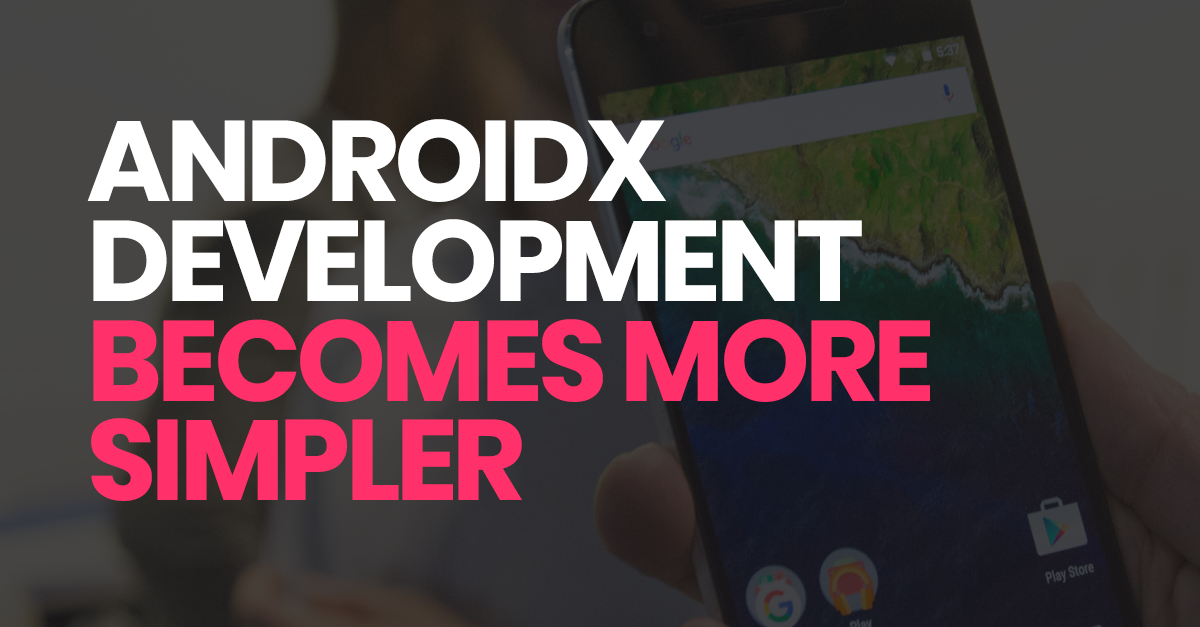Aug 6, 2018 Software Development
Recent Updates in AndroidX Development
Aug 6, 2018 Software Development
Aug 6, 2018 Software Development
In Android JetPack announcement at I/O in May, Google unveiled a redesign for the Android Support Library, called AndroidX. Like its predecessor, AndroidX is designed to help developers maintain a backward compatibility with older versions of Android. These libraries are now open source as part of AOSP program.

Good thing is that now if you are an Android App Creator then you can also use AndroidX in your project. AndroidX was started out as a small set of libraries mainly aimed to provide backwards compatibility for new Android platform APIs and therefore its development was strictly limited to the platform. Therefore, all of the work was done in internal Google branches and then pushed to the public Android Open Source Project (AOSP) alongwith the platform push. With this workflow, the external contributions were only limited to a small window of time where the internal and AOSP branches were close in content. Also more important is that, it was difficult to contribute as in order to do a full AndroidX build and testing, external developers needed to check out more than 40 GB of the full Android platform code to their development platform or system.
Now, the scope of AndroidX has widened drastically and now it includes libraries like AppCompat which is for easier UI development, Room for database management and WorkManager for background work mainly. Most of these libraries implement higher-level abstractions and are less dependent on the new revisions of the Android platform in general plus all libraries are designed with backward compatibility in mind right from the starting part. Therefore many libraries like RecycleView and Fragment are purely AndroidX side implementations and have very less relations to the platform.
Good App Developer knows how it all begun. Google started this process two years ago by beginning a process of unbundling i.e moving AndroidX out of Android platform builds into its own separate build base. Google did lots of work in this regard including migrating entire builds from make to Gradle as well as migrating all of their API tracking tools and documentation generation out of the platform build. Only after that process has been completed, Google reached at a point where a developer can now check out a minimal AndroidX project, can open it in Android Studio and can build using the public SDK and public Android Gradle Plugin and more.
The Android developer community has an old demand that things should be made in such a way so that they can contribute more easily to AndroidX. But as we have explained above this was not an easy thing to do and was quite a challenge. This is changed now for the betterment of all i.e AndroidX development is now moving to public AOSP. What that means is that the primary feature development of Google’s Android except the top-secret integrations with the platform and changes, will be visible in the aosp/androidx-master-dev branch.
Now when people will Hire Mobile App Developer they can confirm whether they are using the benefits of AndroidX in their project. Google is saying that they are making these changes to give more transparency to developers as it gives developers a chance to see features and bug fixes implemented in real-time. Google is excited about receiving the bug fix contributions from the developer community.
Other than development process, AOSP will be platform for experimentation and prototyping. People will be able to see new libraries show up in the repository with some of them being removed before they are included or can even change drastically during the pre-alpha development or even merge into existing libraries and only the libraries on maven.google.com will be officially ready for external developer usage and final consideration. Good thing is this is just the start, more will come in future from Google side on AndroidX front. Keep Waiting.